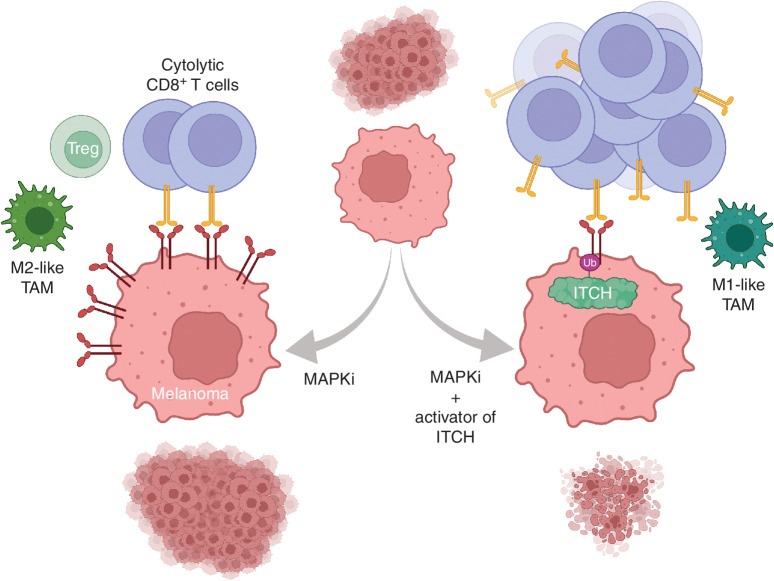Figure 7.
Proposed combinatorial strategy to reduce immune-mediated MAPKi resistance. MAPKi therapy of melanoma elicits tumor cell–surface PD-L1/L2 accumulation, which evades tumor antigen–specific cytolytic CD8+ T cells and potentially alters the phenotype or differentiation of intratumoral immune cell types such as Tregs and TAMs. This immune evasion or immune-suppressive tumor microenvironment reduces the durability of MAPKi responses, especially in tumors with high mutational or neoantigen burdens. ITCH, as an E3 ligase that ubiquitinates tumor cell–surface PD-L1/L2 and targets them for internalization and lysosomal degradation, can be activated pharmacologically during the early phase of MAPKi therapy to enhance tumor rejection by cytolytic CD8+ T cells. Subsequent immunologic memory may suppress acquired MAPKi resistance driven by nonimmune or genetic mechanisms. Strategies alternative to ITCH activation may involve proteolysis-targeting chimeras against PD-L1/L2 or depletion of Tregs or M2-like TAMs.

